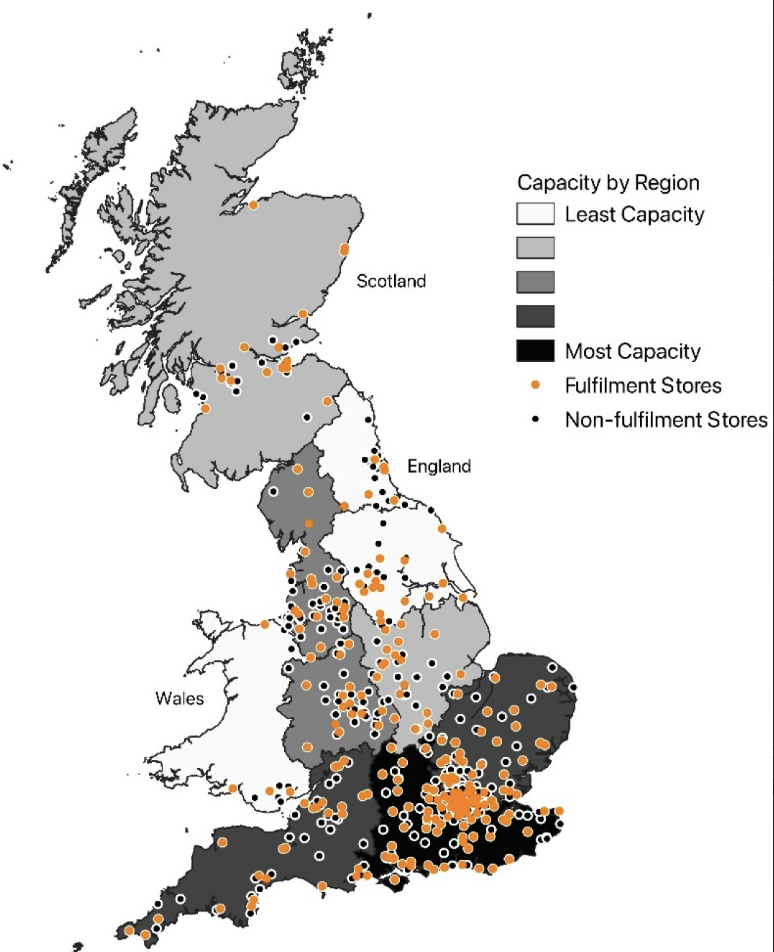Forecast growth in e-commerce home-delivery demand provides retailers with opportunities for expansion and increased levels of investment. To maximize these growth opportunities, retailers face operational and logistical challenges related to order fulfillment and the last mile. In contrast to other sectors, many grocers operate a store-based delivery model rather than a separate distribution channel. Researchers present a capacity model where orders are picked from store shelves, and store-based fleets of delivery vehicles are used for last-mile fulfillment (delivery to the consumers’ homes).
With very rare access to commercial data from Sainsbury’s, the second-largest grocer in Great Britain, the researchers analyzed the geographical variations of online groceries fulfillment capacity at a store, region, and rural-urban geography levels, exploring the interrelated impact of capacity constraints related to storage and delivery in limiting the further growth of these services.
The spatial extent of delivery service areas varies considerably between stores, and the existing store network presents barriers to further capacity expansion in some regions. The researchers argue factors associated with the last mile are a critical capacity constraint/enabler in the e-groceries sector. They suggest that the effective expansion of these services requires further research into online service area delineation to maximize delivery efficiency and capacity. The approach used here is readily transferable to other online service delivery providers in Great Britain and elsewhere.

Source: Urquhart R, Newing A, Hood N, Heppenstall A. Last-Mile Capacity Constraints in Online Grocery Fulfilment in Great Britain. Journal of Theoretical and Applied Electronic Commerce Research. 2022; 17(2):636-651. https://doi.org/10.3390/jtaer17020033
